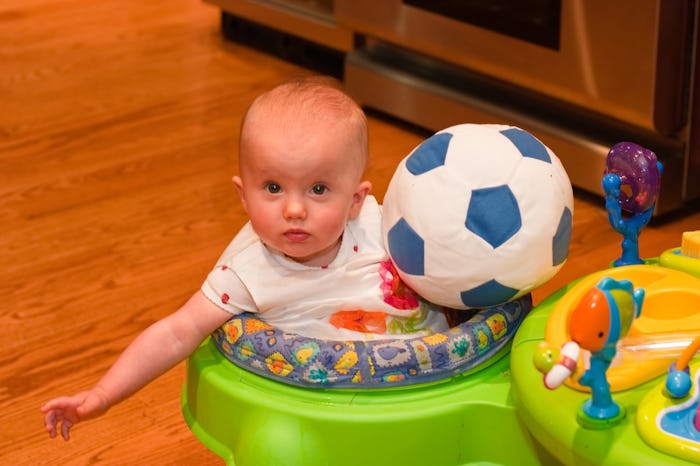Life

How Your Bouncy Seat Can Help Your Baby Get To Sleep
Us parents will rock, nurse, sing, and try almost any strategy out there to lull our babies to sleep. Unfortunately, however, what works for one baby doesn't necessarily work for another, as any parent of multiple children will tell you. So if you're sleep deprived and ready to try a variety of products and techniques promising your baby some necessary shut eye, it's worth asking if your effort will be worth it. For example, does using a bouncy seat to get your baby to sleep actually work? I mean, let's not forget the overall goal here, people: spending a significant amount of time in dreamland, preferably at least eight hours.
Even though every baby is different and, as a result, has different preferences, most babies enjoy the sensation of being rocked or bounced gently. The natural rhythmic motion many of us moms make when holding a baby is very calming to a newborn, and can actually help them to drift off into a deep sleep. In fact, The Sleep Foundation states that babies enjoy rocking and bouncing movements, whether it's from the comfort of their mother's arms or via a device, saying:
"There are plenty of products that facilitate rocking, vibrating, and swinging, too, including bassinets, bouncers, and swings that can work manually as well as automatically. The one common theme: Babies love to move."
So it's not uncommon for many parents to find it easy to get their babies to sleep when they place them in a vibrating or swaying chair, but those same parents usually have trouble putting their babies down to sleep in their crib or bed. While it's tempting to allow a sleeping baby to stay in their bouncy seat until they wake up, the American Academy of Pediatrics (AAP) advises against such a practice, saying:
"If your baby falls asleep in a car seat, stroller, swing, infant carrier, or sling, you should move him or her to a firm sleep surface on his or her back as soon as possible."
According to safe sleep guidelines provided by the AAP, in order to decrease the risk of Sudden Infant Death Syndrome (SIDS) babies should only be placed on their back in their own sleep space, but preferably in the same room as their parents (also known as co-sleeping).
Although bouncy seats and similar products can be a great resource to encourage your baby to relax and give you free use of your hands for a moment or two, they are no substitute for a crib, bassinet, or any other recommended sleep space that's safe for your baby. So while they can indeed help your baby fall asleep, it's important to move your little one to a safe sleep space the moment they start catching those coveted Zs.